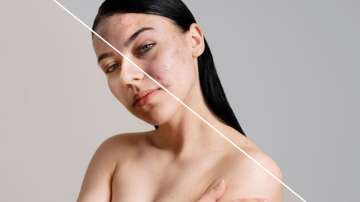Milia are small, white, or yellowish bumps that can appear on your face, particularly around your eyes. They are tiny cysts filled with keratin, a protein that is found in hair, nails, and skin cells. Milia are not harmful, but they can be annoying and unsightly. Fortunately, there are several ways to get rid of milia.
Exfoliate your skin regularly: Exfoliation helps remove dead skin cells and unclogs pores, which can prevent new milia from forming. You can use a gentle exfoliating scrub or a chemical exfoliant, such as alpha-hydroxy acid or beta-hydroxy acid.
Use a retinoid cream: Retinoids are derived from vitamin A and are known for their anti-aging benefits. They work by increasing cell turnover and stimulating collagen production, which can help reduce the appearance of milia. Retinoids can be irritating to the skin, so it's important to start with a low concentration and gradually increase it over time.
Seek medical attention: A dermatologist can remove milia using a variety of methods, such as using a small needle to puncture the cyst and extract the contents or using a laser to vaporise the cyst. These procedures are generally quick and painless and can be done in the dermatologist's office.
It's important to note that milia are not the same as acne. Acne is a more severe skin condition that can cause inflammation and scarring. If you have acne, you may need to use a different treatment approach, such as topical or oral medications.
In addition to these treatments, there are several things you can do to prevent milia from forming in the first place. First, make sure you are using a gentle cleanser and moisturiser that are suitable for your skin type. Avoid using heavy creams or products that contain mineral oil, which can clog pores. Second, wear sunscreen every day to protect your skin from the sun's harmful UV rays. Sun damage can cause the skin to thicken and become more prone to milia. Touching your face can transfer bacteria and oil to your skin, which can contribute to milia and other skin problems.
